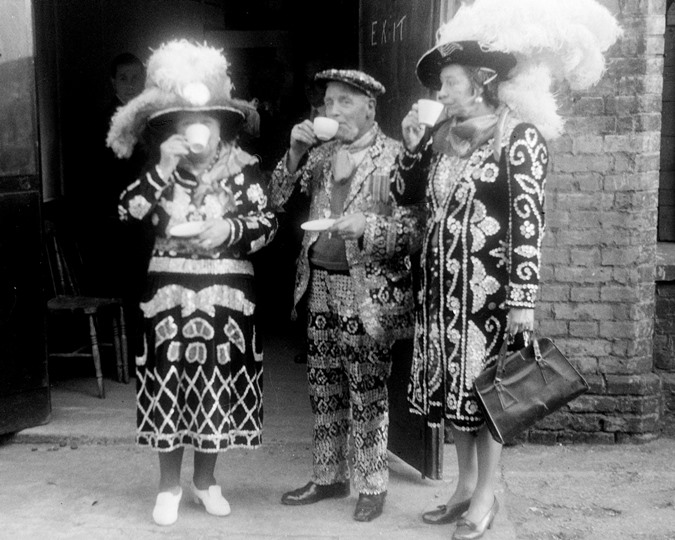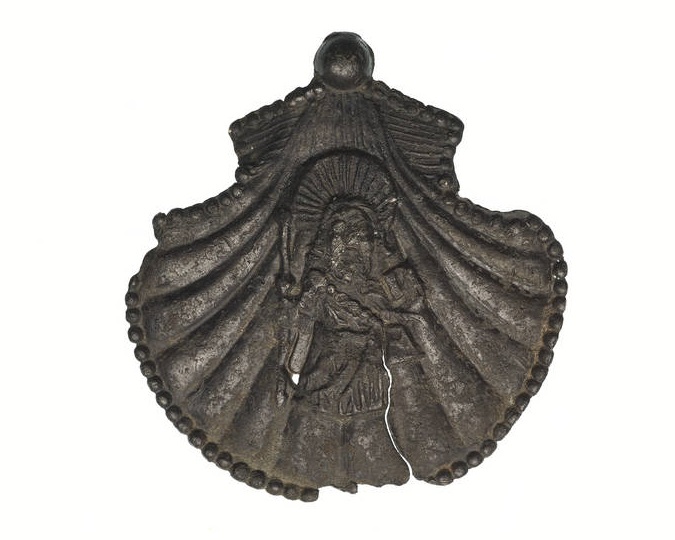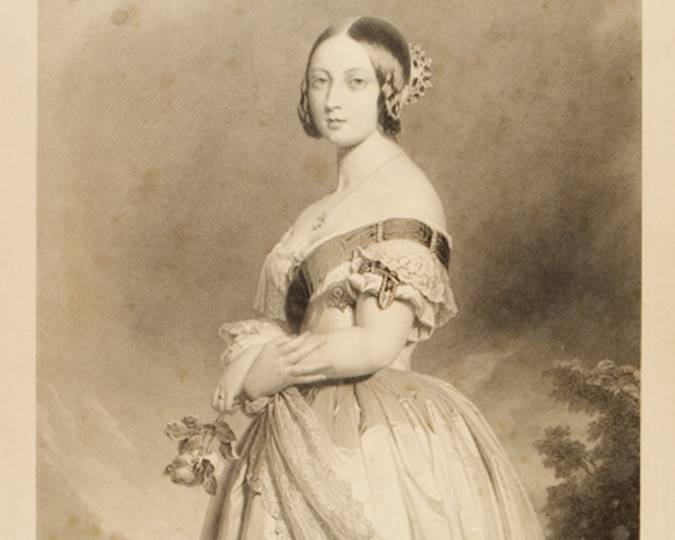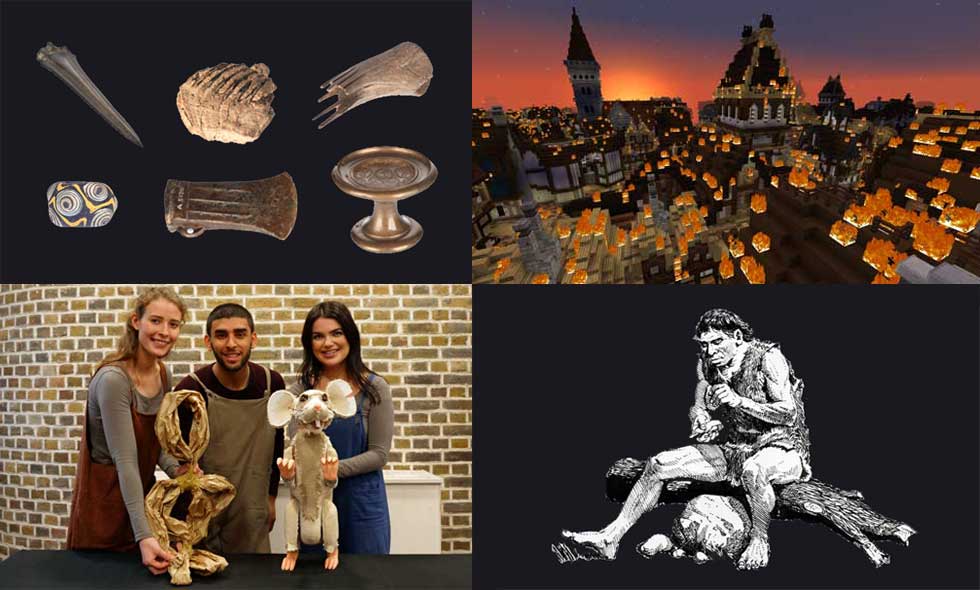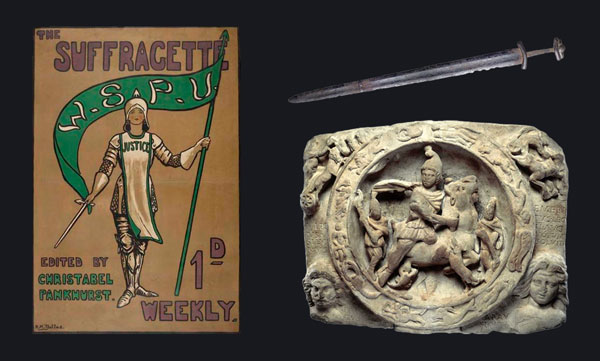Rhymes in Time:
The Muffin Man
Who was the muffin man and where is Drury Lane? Sing along with Lauren and then find out below.
You can click here to find a full transcript of this video.
Do you know the muffin man,
The muffin man, the muffin man?
Do you know the muffin man,
Who lives on Drury Lane?
Yes I know the muffin man,
The muffin man, the muffin man.
Yes I know the muffin man,
Who lives on Drury Lane.
What's it all about?
This rhyme was first written down in 1820 and – you guessed it – it’s about a muffin man working on Drury Lane in London’s West End.
Poor Victorians spent long hours at work, usually working twelve hours a day with only Sundays off. That didn’t leave much time for cooking! Few had kitchens and instead had to cook their food on an open fireplace, which was hot and smoky work. Many people chose to buy their food from the wide variety of street sellers instead.
The muffin man was just one of these, selling muffins and crumpets for low prices. Healthy meals were expensive, so many families relied on bulky foods like bread and muffins to fill them up. Other street sellers sold fried fish, hot eels, pea soup, baked potatoes and meat pies.
Street sellers can still be found all over London and many other cities today.
What is your favourite kind of street food? If you were a street vendor, what would you sell?
Try at home!

Bake away!
Imagine you are the muffin man, delivering delicious muffins to your family.
Make muffins from playdough and act out selling them to passers-by. How many muffins can you sell?
Prefer not to get messy? Pretend some colourful wooden blocks are different cakes or buns.
Can you make muffins in different colours, shapes and sizes? What flavours will you create?
Brilliant bake off
Try baking your own muffins with your family. You could make sweet muffins or traditional English muffins.
Perhaps someone in your family has a favourite recipe, or you could look one up in a cookbook or online.
What ingredients will you use? Can you come up with your own new recipe?
The best in town!
People selling food on London’s streets often yelled catchy phrases to attract customers.
Pretend you are a street vendor and make up your own catchy slogans to sell your food like hotcakes!
You could even design your own eye-catching sign.Take a closer look...
Baker's cart

The muffin man in the nursery rhyme probably carried his muffins in a basket – although it would have been much easier to use a cart like this.
A London baker used this cart in the 1920s and 1930s to deliver cakes and bread straight to customers' doorsteps. Like milkmen, bakers divided London neighbourhoods into delivery 'rounds' local to their bakery.
Would you like fresh bread, cakes and muffins brought straight to your door?
Do you have anything delivered to your house?
17th-century bread oven

This bread oven was used by bakers in the 1600s, 200 years before The Muffin Man was written.
It was heated by lighting a fire inside, shutting the door (which is missing here) and waiting for the oven to reach the right temperature.
How is this different from the ovens we use today?
Early 20th-century pastry cutter

This pastry cutter was used to shape the delicious baked goods sold by the Stanley family in their North London bakery.
What food have you seen in interesting shapes?
Can you think of food shaped like a half-moon, or a circle or triangle?
View of Drury Court, 1880

This painting makes Drury Lane and nearby Drury Court look very peaceful and pretty. But, by the end of the 18th century, Drury Lane had the reputation of being one of the dirtiest and most overcrowded streets in London!
Look at the painting closely.
Can you spot the lady going into the shop, the man clearing the road of snow and the church steeple in the background?
Investigate more
Do you know the muffin man? No? Let’s get to know him!
The muffins in the rhyme are a type of bread and not the fluffy cakes we typically think of as a ‘muffin’ today. In the Victorian period, they were a cheap and popular food often eaten by workers who didn’t earn a lot. They’re also still sold today in lots of supermarkets.
Have you ever eaten a muffin? Some people like to toast them and eat them for breakfast with butter.
The ‘muffin man’ brought muffins and crumpets from a local baker and sold them at a profit. He would walk around London’s streets selling his muffins to people at the cost of half a penny each and he might even deliver them to wealthier homes.
In 1861, a man called Henry Mayhew travelled around London documenting all of the different jobs which people did. He printed his notes in a book called ‘London Labour and the London Poor’ and he included a section about street sellers. Mayhew said that most ‘muffin men’ were either the young sons of bakers, or elderly men who had once been bakers. ‘There are a few girls in the trade, but very few women’.
To sell their muffins, these sellers would ring a loud bell to attract the attention of people in the streets. Mayhew describes how ‘the muffin bell still tinkles along the streets’.
If you were selling food on the street, what would you do to attract customers? Ring a bell, sing a song, or maybe even do a dance?
How tasty were the muffin man’s muffins?
In the 18th and 19th centuries, there were no laws to make sure that the ingredients in food were safe. To keep bread cheap and produce it in large quantities, some bakers would put things like chalk or plaster of Paris in it to make it look whiter and chunkier – yuck!
Some bakers even put alum in their bread as it was really cheap. Alum is an aluminium (metal) based powder which is now used in washing detergent! How do you think that bread tasted?
Don’t worry – there are lots of laws now to make sure all of our food is safe to eat.
Where did the muffin man live?
The muffin man in the rhyme lives on Drury Lane, which is right next to Covent Garden in London. In the 18th century, it was an extremely poor area and it had a terrible reputation. Many people went there to drink, gamble and sometimes even commit crimes. The muffin man would have sold his muffins to many of the people who lived and worked nearby.
Today, the area is much nicer. It is very busy with tourists and there are lots of theatres and shops.
Have you ever visited London’s West End?
More Rhymes in Time
Watch more performances of classic nursery rhymes and discover the history behind them.
[VIDEO BEGINS]
Hello and welcome to the Museum of London's 'Rhymes in Time'! My name is Lauren and I'm here to do some singing with you today.
Now it's rather funny, isn't it? Because we are all together, but we're also not. I'm here in my home, and you're the other side of the screen in your homes.
[00:00:28]
So, before we begin, I just wanted to make sure that I can see and hear all of you. So, would you come up a little closer to the screen for me, like this? And when I say 'go!' I'd like you to give me a big wave and say 'hello Lauren!' Ready? Go! … That was amazing! I heard and saw all of you.
Thanks so much everyone!
[00:00:53]
Now, today's nursery rhyme is 'The Muffin Man'. Do you know it?
It's a really, really old one. It's 200 years old, in fact. And here's a fun fact for you: did you know, that 200 years ago, the Muffin man, would have brought freshly baked, delicious smelling muffins to your door for your breakfast every morning? Does that sound good?
Hey, what did you have for breakfast this morning? Can you call out for me? Go! Oh, wow! That does sound yummy. Do you want to know what I had for breakfast? Well, I had a big pile of pancakes, topped with strawberries, and bananas, and blueberries, and cream, and... oh, sorry - I'm getting a little carried away.
[00:01:42]
Anyway, on with the nursery rhyme! Do you know the words? Don't worry if you don't. Shall we go through it once together?
I wonder, can you imagine that you are baking your own muffins. You've got a baking bowl in front of you, with a wooden spoon.
We're going to begin by saying:
[00:02:00]
Do you know the muffin man,
The muffin man, the muffin man?
Do you know the muffin man,
He lives on Drury Lane.
Yes, I know the muffin man,
The muffin man, the muffin man.
Yes, I know the muffin man,
He lives on Drury Lane.
[00:02:09]
Fantastic! Well done everyone. Are you ready to sing it all the way through with me when I say 'go!'?
[00:02:26]
Go!
♪ Do you know the muffin man,
The muffin man, the muffin man?
Do you know the muffin man,
He lives on Drury Lane.
Yes, I know the muffin man,
The muffin man, the muffin man,
Yes, I know the muffin man,
He lives on Drury Lane. ♪
[00:02:47]
Fantastic! Well done, everyone - great singing! Thank you so much for singing along with me today. Head to the museum website for more fun facts and the history of The Muffin Man, plus some more activities for you to try at home. And, I wonder, can you try writing your own verse at home? Bye bye!
[00:03:14]
[VIDEO ENDS]

